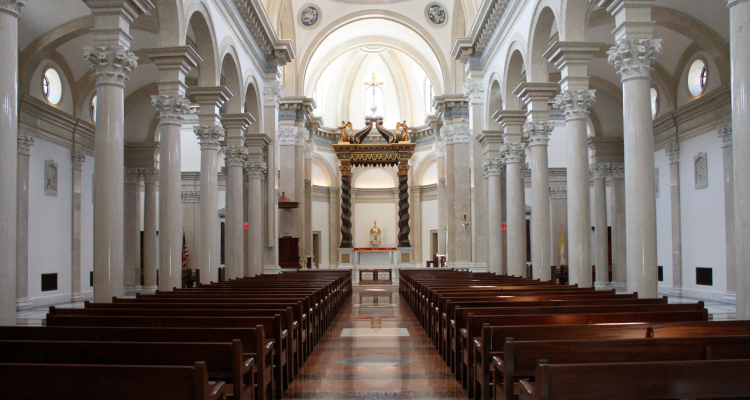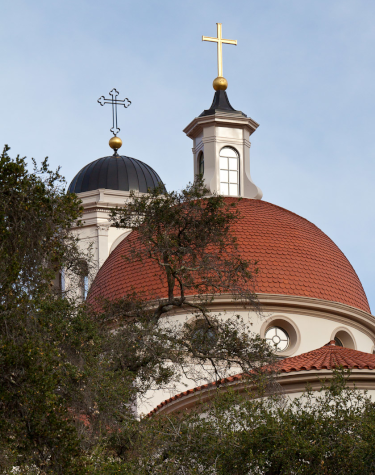- Home
-
About
 Fidelity & Excellence
Fidelity & ExcellenceThomas Aquinas College is unique among American colleges and universities, offering a faithfully Catholic education comprised entirely of the Great Books and classroom discussions.
-
A Liberating Education
 Truth Matters
Truth MattersTruth, and nothing less, sets men free; and because truth is both natural and supernatural, the College’s curriculum aims at both natural and divine wisdom.
-
A Catholic Life
 Under the Light of Faith
Under the Light of FaithThe intellectual tradition and moral teachings of the Catholic Church infuse the whole life of Thomas Aquinas College, illuminating the curriculum and the community alike.
-
Admission & Aid
 Is TAC Right for You?
Is TAC Right for You?Do you enjoy grappling with complex questions? Are you willing to engage in discussions about difficult concepts, with the truth as your ultimate goal?
-
Students & Parents
 Mind, Body & Spirit
Mind, Body & SpiritThere is always something to do at TAC — something worthwhile, something fulfilling, and something geared toward ever-greater spiritual and intellectual growth.
-
Alumni & Careers
 What Can You Do with a Liberal Education?
What Can You Do with a Liberal Education?Nothing speaks more to the versatility of the College’s academic program than the good that our alumni are doing throughout the Church and the world.
- Search
- Giving
Architect Wins 2022 Palladio Award for TAC Chapel

Cited for its widespread impact on the world of sacred architecture, Our Lady of the Most Holy Trinity Chapel — the crown jewel of Thomas Aquinas College’s California campus — has earned its architect, Duncan G. Stroik, a 2022 Palladio Award from Traditional Building. According to the magazine, the Chapel “has not only elevated the campus’ reputation on a national level but also has led to a revival of sacred architecture in towns, cathedrals, and college campuses.”
Traditional Building began conferring the Palladio Awards in 2002 to honor “outstanding achievement in traditional design,” and Mr. Stroik has repeatedly come to its attention. In 1990 he helped to found the classical program at the University of Notre Dame School of Architecture, which has drawn several of the College’s alumni to its ranks over the years. Around the same time, Mr. Stroik established an architectural firm committed to reviving sacred architecture, which has since acquired a reputation for excellence and elegance, as evidenced by its impressive portfolio — in which Our Lady of the Most Holy Trinity Chapel stands tall.
“When the Chapel was built in 2009, in many people’s minds, it was the first grand new classical college church in 50 years,” says Mr. Stroik. With the critical input of the College’s late president, Dr. Thomas Dillon, Mr. Stroik deployed his vast knowledge of traditional design to create a vernacular that integrates early Christian architecture as well as elements from Romanesque, early Renaissance, Baroque, Spanish Revival, and Neoclassical periods. The final design earned Mr. Stroik his first Palladio Award in 2011.
 Why, then, another award, more than a decade later?
Why, then, another award, more than a decade later?
“How do you measure the impact of a building? The answer lies in the way it inspires those who use it,” write the editors of Traditional Building. Our Lady of the Most Holy Trinity Chapel, they contend, has inspired not only the students and faculty of Thomas Aquinas College, but admirers worldwide, both believers and non-believers alike — it was the first blossom in a new spring of sacred architecture.
Writing for First Things, Catholic cultural analyst George Weigel has identified Mr. Stroik’s design for the Chapel as an indication of renewed vigor in American Catholicism: “Marcel Breuer’s Brutalist-inspired abbey church at St. John’s in Minnesota was often considered the most important U.S. Catholic building of the mid-20th century. Compare it to Duncan Stroik’s chapel at Thomas Aquinas College in California, which I’d suggest is the most important U.S. Catholic building yet erected in the 21st century. Stroik, not Breuer, is the future, because the TAC chapel’s classicism and decorative beauty call us out of ourselves and into the Kingdom; the Breuer church depresses the spirit.”
Considering the Chapel’s global resonance, Mr. Stroik is keen to give credit where it is due, noting that the final design owed much to Dr. Dillon’s dedication. “He was deeply engaged in the design and construction process and thought of the church like it was his own, like a book that people would read for centuries to come,” says Mr. Stroik. “Involvement in every aesthetic detail came naturally to him because he believed that the domus Dei needed to be worthy of the Creator. This drive for excellence meant that he wanted to be convinced through words, drawings, and precedent that every design decision was correct.”
“On behalf of all of us at Thomas Aquinas College who daily benefit from his handiwork, I want to congratulate Mr. Stroik on this award,” says College President Dr. Paul J. O’Reilly. “His design for the Chapel amply realized Dr. Dillon’s vision for a true ‘house of God and gate of Heaven,’ unifying the campus, and we are pleased that it — like the College itself — has had such a decisive impact worldwide.”


